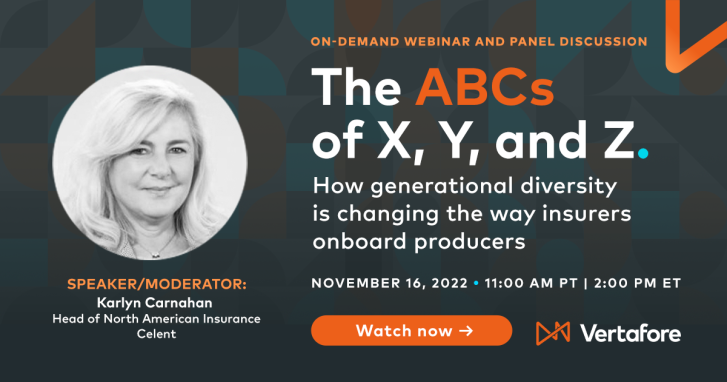
Generational changes among insurance professionals
Since 2014, the average age of an employee in the typically older-skewing insurance industry has steadily declined from 60 down to 45. COVID accelerated this trend during recent years, and many principals opted for retirement throughout the pandemic. As they departed—cashing out and taking their institutional knowledge with them—this created a predictable spike in mergers and acquisitions, as well as an unexpected response from younger insurance professionals according to Celent research.
What the new cohorts of producers want and how carriers can accommodate them
Karlyn Carnahan, the head of North American insurance at Celent, surmised that younger insurance professionals spend more of their time working through errors and omissions and thus want the reassurance of another person’s perspective. For carriers, this has significant impact on staffing allocations, as this might be the rare instance where Millennials are more likely to place a phone call than their parents. Offsetting this necessary reallocation of support staff with increased straight-through processing could be a welcome option for certain carriers.
The downstream impact of mergers and acquisitions
With so many mergers and acquisitions (M&A) among agencies—Amy Taylor of Sompo International and Craig Welsh of Westfield reported receiving hundreds of M&A notices per year—there is added work for both agencies and carriers. Onboarding new producers can be a lengthy manual process without the right solution to simplify the process. Additionally, in terms of agent experience, there is greater expectation of faster service than ever before. Delays in onboarding result in lost opportunities to bring in new business.
What carriers need
When it comes to best practices for onboarding, carriers need a clear return on their investment, per Patrick Massi, a senior product manager at Vertafore. But most carriers are primarily motivated by concerns about regulatory compliance and the desire to deliver a superior agent experience, which can be difficult to assign numbers to until there’s a detrimental cost. Whether it’s a reputational impact or a fine, it can be costly to carriers if they lack proper tools to manage onboarding processes. Furthermore, many agencies rate electronic tools such as license verification as the highest priority in their decision to work with carriers.
By 2025, 61% of the industry expects to be managing licenses with preferred carriers entirely or almost entirely digitally.
